Robots will build a base on the moon
According to NASA’s plan, a lunar base suitable for human settlement should be opened as early as 2020. But for the beginning of its construction it is necessary to prepare a cosmodrome for landing and launching rockets. Obviously, this will make robots.
At NASA’s request, Astrobotic Technology together with specialists from the Institute of Robotics at Carnegie Mellon University conducted a study ( PDF ) of which robots are needed for construction.
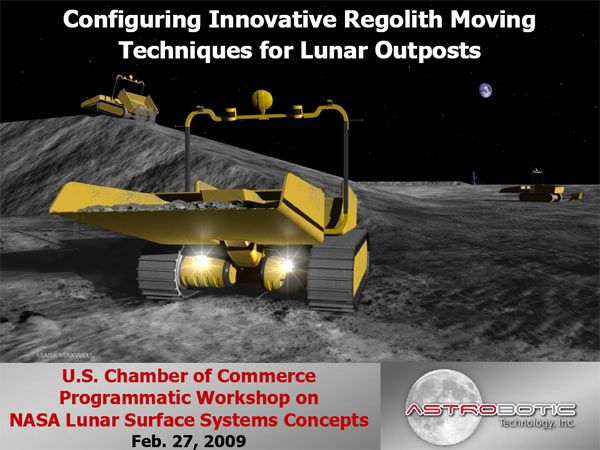
')
We publish key fragments from this report.
At the first stage, it is required to level the regolith (lunar soil) under the landing sites and roads, clean the area from meteorite fragments and other debris, dig trenches for cables and other infrastructure, build protective embankments and fix the landscape.
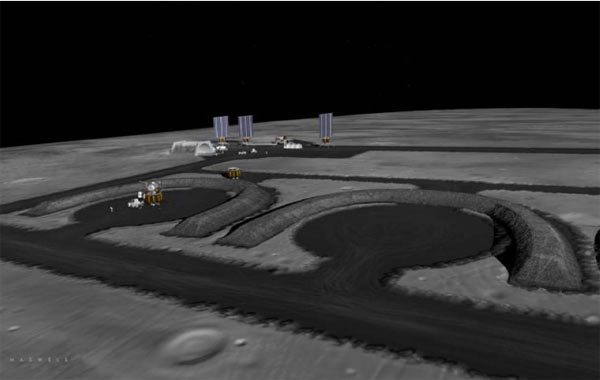
Protective embankments are necessary in order to protect the surrounding regolith and structures from melting, which is inevitable in the process of multiple landings and missile launches.

Now scientists are finding out how powerful excavators and bulldozers weighing no more than 300 kg will be in terms of lunar gravity, how fast they can work. According to preliminary estimates, they will be able to build protective embankments within six months.
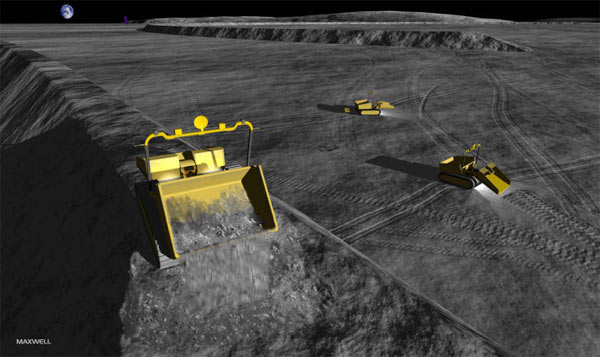
For the efficient movement of the regolith, it is planned to apply several complementary technologies: 1) the body on excavators will increase the payload of the robots; 2) vibration under pressure for tighter material tamping; 3) paving stones collected on local soil.
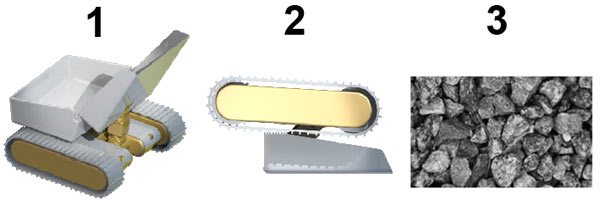
Accordingly, for tamping and paving robots equip with special devices. For effective construction of the robot, scientists need more information about the size and number of stones on the lunar surface.
The algorithm for moving robots for the greatest efficiency will be such (with cycles of weaning for recharging).
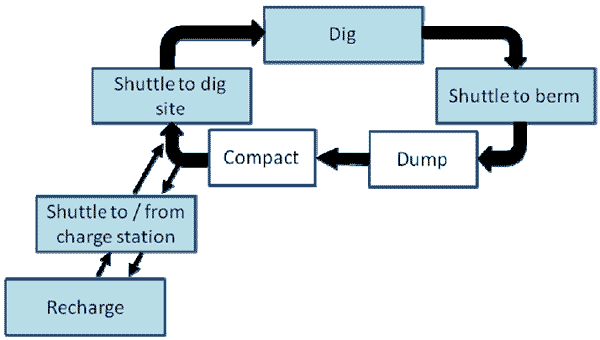
According to calculations, two excavators with bodies, each weighing 150 kg, can build an embankment for 152 days (5 months) with an average body load of 30%, movement speeds of 15 cm / s and estimating that 1200 tons of regolith need to be moved.
Three quarters of the time excavators will spend on the road, so the speed and accuracy of their movement is a key indicator. It is assumed that they will not have a full-fledged own navigation system. All control will be carried out by operators from the Earth in real time, as well as in a partially autonomous mode under the supervision of operators.
At NASA’s request, Astrobotic Technology together with specialists from the Institute of Robotics at Carnegie Mellon University conducted a study ( PDF ) of which robots are needed for construction.

')
We publish key fragments from this report.
At the first stage, it is required to level the regolith (lunar soil) under the landing sites and roads, clean the area from meteorite fragments and other debris, dig trenches for cables and other infrastructure, build protective embankments and fix the landscape.

Protective embankments are necessary in order to protect the surrounding regolith and structures from melting, which is inevitable in the process of multiple landings and missile launches.

Now scientists are finding out how powerful excavators and bulldozers weighing no more than 300 kg will be in terms of lunar gravity, how fast they can work. According to preliminary estimates, they will be able to build protective embankments within six months.

For the efficient movement of the regolith, it is planned to apply several complementary technologies: 1) the body on excavators will increase the payload of the robots; 2) vibration under pressure for tighter material tamping; 3) paving stones collected on local soil.

Accordingly, for tamping and paving robots equip with special devices. For effective construction of the robot, scientists need more information about the size and number of stones on the lunar surface.
The algorithm for moving robots for the greatest efficiency will be such (with cycles of weaning for recharging).

According to calculations, two excavators with bodies, each weighing 150 kg, can build an embankment for 152 days (5 months) with an average body load of 30%, movement speeds of 15 cm / s and estimating that 1200 tons of regolith need to be moved.
Three quarters of the time excavators will spend on the road, so the speed and accuracy of their movement is a key indicator. It is assumed that they will not have a full-fledged own navigation system. All control will be carried out by operators from the Earth in real time, as well as in a partially autonomous mode under the supervision of operators.
Source: https://habr.com/ru/post/53554/
All Articles